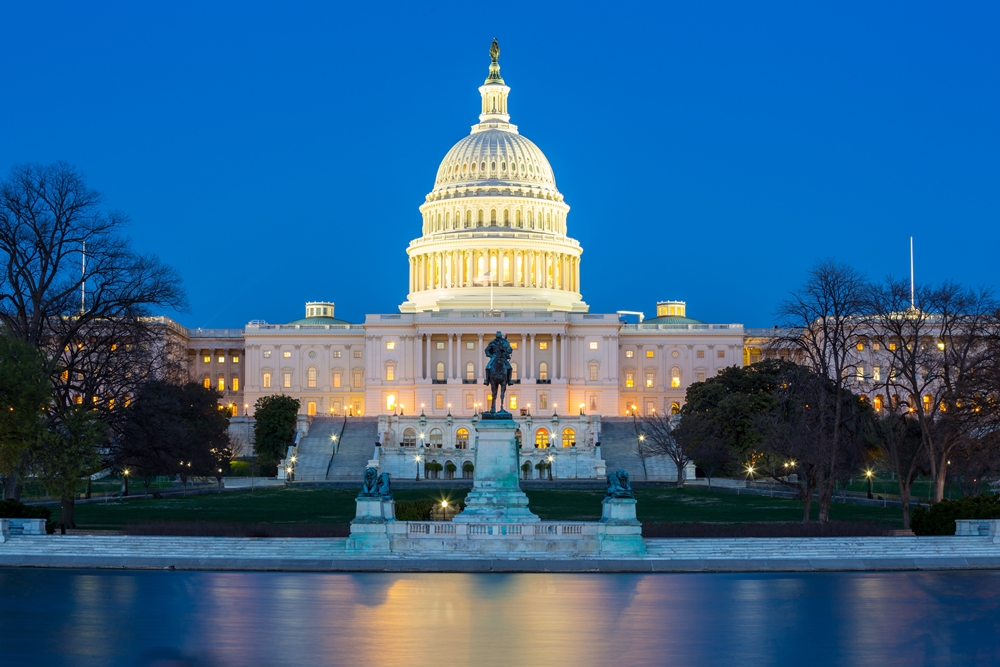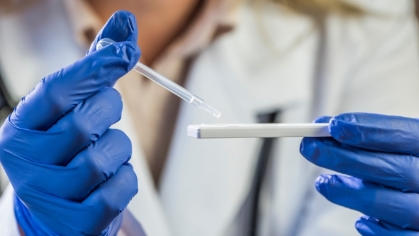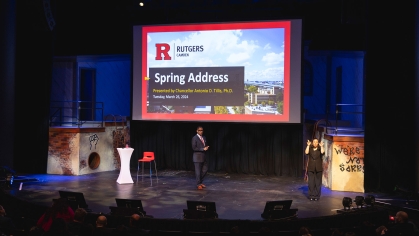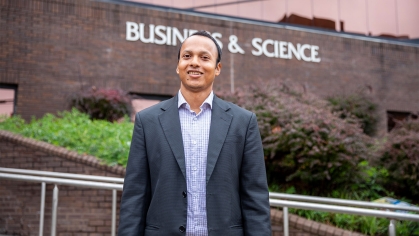So What’s the Holdup? Rutgers–Camden Researcher Explains Pros and Cons of Biden Administration’s $1.75 Trillion Spending Package
As the Biden administration signals that it’s time to wrap up negotiations on its $1.75 trillion social spending package, Congress continues to weigh the short- and long-term benefits of the bill with its considerable cost.
However, cautions Rutgers University–Camden researcher Michael Hayes, any kind of action will have a positive impact with a relative minimal cost in the short term, but could also lead to unintended consequences.
“To sum up the entire debate, there is no such thing as a free lunch,” says Hayes, an associate professor of public policy and administration. “I don’t envy our representatives in Congress for having to strike that delicate balance.”
So, what’s the holdup?

“To sum up the entire debate, there is no such thing as a free lunch.” – Michael Hayes
Hayes, whose research expertise includes public budgeting and finance, and state and local tax policy, posits that resistance over the bill’s price tag is due in part to how Democrats are marketing — or failing to market — the bill. He notes that all $1.75 trillion wouldn’t be paid at once, but rather cost about $175 billion a year over the 10-year period. He adds that the real cost of borrowing, adjusting for inflation, right now is historically very low.
However, the real challenge, says Hayes, is that the federal government continues to add to the deficit without knowing the economic reality of the future. It thus remains to be seen how the package’s cost will hinder the government’s ability to service its long-term debts, as well as deal with geopolitical events over the next decade that may require additional spending.
“We could need to increase defense spending or there could be a trade war with China; we just don’t know,” says Hayes. “I think this uncertainty has a lot to do with the hesitation on the bill that we are seeing right now.”
Just as importantly, notes the Rutgers–Camden researcher, it is tough to tell how fragile the economy is right now, so there are potential pitfalls, such as inflation and supply chain disruptions, to any attempts to kick-start it.
“However, at the end of the day, the one certainty still remains that the real cost of borrowing is near zero,” he says.
Whatever the revenue cost, cautions Hayes, the bill will require deficit financing over the next 10 years. He argues that the bill’s call to raise the tax rate for Americans making over $400,000 from 37% to 39.6% would have a minimum economic impact on these upper-middle-class households, who have actually fared well during the pandemic. He notes that the economic recovery has been K-shaped — meaning different segments of the economy are recovering at different rates — with lower-income households suffering the worst economic effects.
“The marginal tax rates on the $400,000 and over households is not that big of a jump to warrant any major economic effect,” he says.
Hayes further notes that the spending bill also calls for an increase in the corporate tax rate from 21% to 26%. Corporations have historically high levels of cash on their balance sheets, he argues, and can handle any short-term increases with minimal effects. It’s still uncertain, however, what the impact on business will be in the long term.
“If I am a corporate executive, I am more concerned with long-term inflation than a marginal tax increase,” says Hayes.
So, what are some provisions at stake, and what does the Rutgers–Camden researcher see as the pros and cons of these measures?
Universal pre-K
The bill would allocate $450 billion to provide two years of free pre-K for 3- and 4-year-olds. Hayes says empirical evidence suggests that this type of investment has a huge return, particularly for low-income households and their children.
“Being able to come into kindergarten and first grade with some basic skills helps reduce achievement gaps, not only in the initial part of their education, but in a child’s life moving forward,” says Hayes.
Child care

The legislation would provide free child care services for every family for children ages 0 to 5.
The legislation would provide free child care services for every family for children ages 0 to 5. Hayes argues that child care affordability is a major issue, which impacts many households’ abilities to enter the labor market.
“As the price of child care raises, it becomes harder for two members of lower-income households to both participate in the labor market to the extent that they would like,” he says.
However, notes Hayes, one challenge to keep an eye on is an ever-growing shortage of workers in child care facilities. Any additional investment in this area could increase demand for these services. If the supply of child care is fixed and less likely to increase accordingly with this demand, it could result in a potential rise in the cost of child care or fewer available slots in these facilities.
“That’s the one concern that I would have,” says Hayes. “Are we going to create a situation where demand outweighs supply and there are waiting lists, or reductions in quality child care?”
Expanded Medicare
Hayes says that the same concern for overburdening services can be applied to the bill’s plan to expand Medicare to cover dental, health and vision services. He says that rising inflation and a shortage of workers, coupled with a rise in demand for these services, could overload these markets.
Community college
One of the measures reported to be cut from the most recent draft of the bill would have allowed two free years of college for all students, regardless of family income. Hayes maintains that, overall, it is vital that all young adults receive some form of education and empirical evidence suggests that putting caps or eligibility requirements on this education doesn’t make sense.
Rutgers University–Camden Chancellor Antonio D. Tillis notes that, by making education more affordable, the benefits will last a child’s lifetime.
“Students who have access to higher education and the resources to complete a four-year degree will go on to be more competitive in the labor market and more successful in their careers,” says Tillis. “That’s why Rutgers–Camden offers the Bridging the Gap program, which helps eligible New Jersey students reduce their college costs by up to 100%. This innovative program is the first of its kind in New Jersey, making Rutgers–Camden a premiere destination for students to receive a world-class education with little to no student debt.”
Child tax credit

The legislation would extend the child tax credit that gives families — individuals making up to $75,000 and couples making up to $150,000 — $3,600 per child under age 6, and $3,000 per child ages 6 to 18.
Hayes argues that if the goal of the program is to reduce property – as some representatives have espoused – then it doesn’t make sense to extend the credit for households who are making $100,000 or more a year, since the median household income in the United States is around $60,000 a year.
“So that means people who are making 50% above everyone else would be still eligible for it. I don’t know if that is reducing poverty,” he says. “It seems that would be basically an income transfer from wealthy households to upper-middle-class households.”
Conversely, he says, if the point of the tax credit is to give people more money to prop up the economy, then the funds may not be used as intended, given that the savings rate in the United States is the highest it has been in decades.
Climate change
The legislation includes a $150 billion clean electricity performance program, which would offer utility companies an incentive to increase renewable energy materials by 4% per year and fine those who don’t reach these benchmarks.
Hayes posits that one of the main uncertainties affecting decisions on the bill is how climate change will impact economic, political and geopolitical challenges in the future. He argues that it’s imperative for the United States to be a “top player” in the competitive climate change arena.
“We are seeing our competitors such as China investing more and more into energy, and we don’t want to be left out,” he says. “These new technologies and industries, particularly clean energy, are vital not only to our economy, but to our national security.”
In a May 2021 article, ”The Labor Pool Is Empty at the Jersey Shore, but Why?,” Hayes discusses factors that may prevent some from returning to work.



